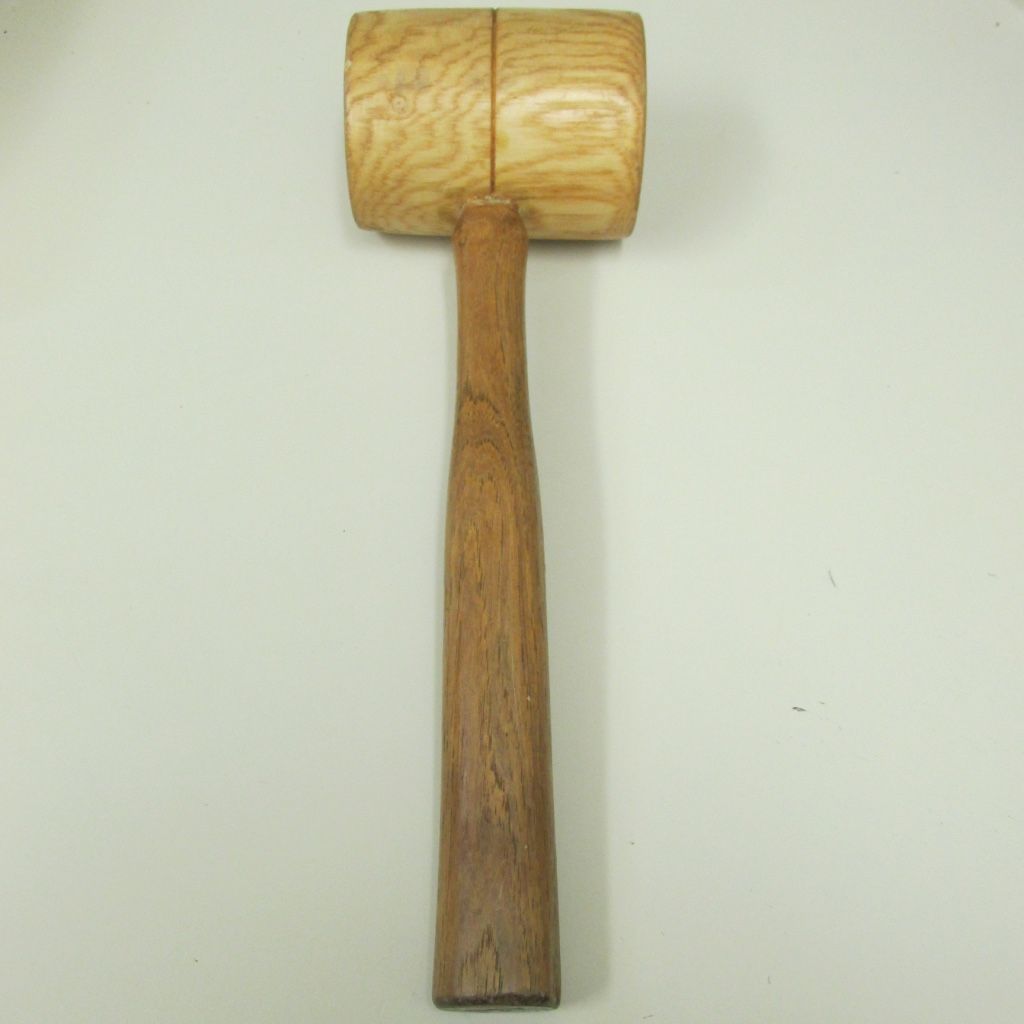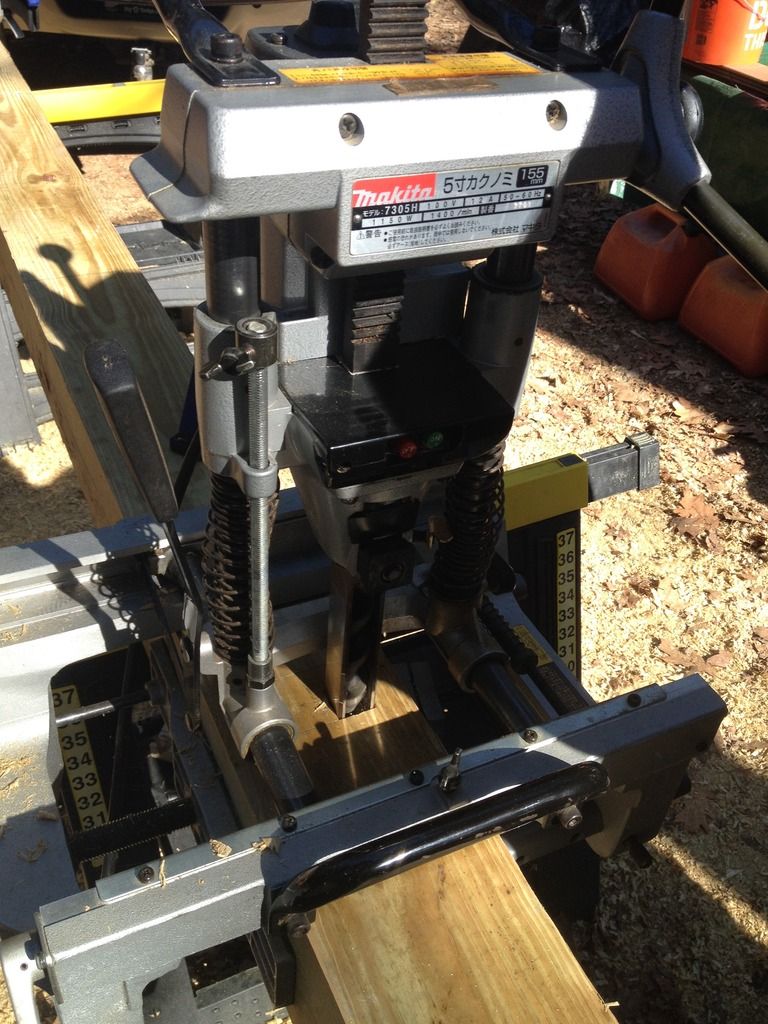|
|
Post by Red on Jun 17, 2015 14:17:49 GMT -5
I just found myself discussing "big" power tools on someone else's thread, so I thought that I'd start a fresh thread where folks doing timber framing (TF) and post and beam (P&B) work can discuss their work tools.
Although I do own Mafell tools -- as well as other German tools -- the bulk of our TF power tools are Japanese. This being the case, I'd love to read the thoughts of MUF members involved with either TF and P&B, or both, about their work tools.
Do any of you, for example, have experience using both Japanese and German TF tools? And, if you switched, it would be very informative to read about why you did it ... but, I digress ... I certainly don't mean to restrict the discussion.
What kind of TF tools are you using?
|
|
|
|
Post by Red on Jun 17, 2015 23:37:37 GMT -5
As information about this particular tool has been requested by another MUF member, I'm going to post about this traditional TF hand tool first (info below photo):

This mallet has an 11" long hickory handle. It has an ironwood head that is 4-3/8" long and has two 3-1/4" OD faces ... and the mallet's overall weight is 24.8 ounces (703 grams).
Mallets aren't the most exciting TF tools, admittedly, but this particular custom-made mallet is perfectly balanced [for me] and has lasted accordingly. The squarer the blow, the longer the mallet should last ... and having taken many swings with a "commander" -- a huge TF mallet used during assembly and raising -- in my time, I can tell you that there's something to this old saying.
|
|
|
|
Post by jasonkehl on Jun 18, 2015 5:18:03 GMT -5
I agree about not further hijacking the other thread so I'll answer your question about the Makita planer here. I like it, it works well and has adequate power. I found that the chute which directs the shavings would clog so I removed it and just let the shavings blow straight out.
I've not tried the Mafell beam planers so I can't compare the two. I wasn't willing to spend the extra money on the Mafell. I have my helpers do all the planing and they haven't complained about the Makita so I don't regret the money saved.
j
|
|
|
|
Post by wrightwoodwork on Jun 18, 2015 7:34:53 GMT -5
I don't use these type tools I know that when I've seen demos of the mafell it has a blower to blow the shavings out sometimes it's best not try the mafell then you don't want it and what does the job is fine and works
|
|
|
|
Post by Red on Jun 18, 2015 12:57:56 GMT -5
I don't use these type tools I know that when I've seen demos of the mafell it has a blower to blow the shavings out sometimes it's best not try the mafell then you don't want it and what does the job is fine and works
Nevertheless, you make a good point in your post. We do own German and Japanese timber framing tools that work pretty well, so there's no pressing need to "sell the farm," so to speak, and spend our hard-earned just to replace everything with red & blue tools. |
|
|
|
Post by Knight Woodworks on Jun 19, 2015 6:13:38 GMT -5
Sorry for the hijack. What's the difference between TF and P&B?
Thanks,
John
|
|
|
|
Post by Red on Jun 19, 2015 13:53:38 GMT -5
That's a very good question, John ... and acronyms should be clarified, so I don't see this as a "hijack."
In recent years, I've heard and read all sorts of explanations, but I'm simply going to give it to you the way it was taught to me (a long time ago) ...
TF, as I'm sure you already figured out, stands for Timber Framing and, when I write or speak about TF, I'm referring to traditional timber framing: the joining of timbers employing nothing more than wood, your tools and a lot of drive ... and, believe it or not, there are joint cutters out there who still do it with nothing more than hand-operated tools.
P&B, on the other hand, stands for Post & Beam. P&B is similar to TF, in as much as the builder is joining timbers to construct a supporting framework, but the difference is that a P&B structure employs metal (usually steel) in the joinery. The clearest example of a P&B structure is one where you see steel plates and hardware joining timbers together.
I was taught traditional TF, but I'm certainly not aloof to P&B work. In fact, with any luck, we'll be working on a fairly elaborate P&B accessory building later this year.
As an aside, there are builders out there who employ metal spline work to join large timbers together (especially out west). These splines are not usually visible, so I'm sure that many of those builders still refer to the structure as a timber frame. As someone who was taught traditional TF, however, I'd probably refer to this type of structure as a "hybrid."
|
|
|
|
Post by Knight Woodworks on Jun 19, 2015 15:34:46 GMT -5
Thank you for the explanation.
Nice mallet!
John
|
|
|
|
Post by GhostFist on Jun 19, 2015 16:23:33 GMT -5
Red,do you find architects,designers,and engineers are less knowledgeable about traditional joinery, and instead will resort to post and beam mechanisms to achieve the end result? Is hardware more cost effective in either the short or long term, or do tried and true joinery techniques, which have been proven to last 1000 years, hold true?
|
|
|
|
Post by GhostFist on Jun 19, 2015 16:24:23 GMT -5
Another question, do all structures need to last 1000 years?
|
|
|
|
Post by holmz on Jun 19, 2015 18:52:13 GMT -5
Another question, do all structures need to last 1000 years? In our generally throw away culture no. And "All" kind of says it is "Never" the right answer.. Suspect that in Nepal they could have helped? But I have no idea whether they are stronger on not. |
|
|
|
Post by Red on Jun 19, 2015 23:09:47 GMT -5
Red,do you find architects,designers,and engineers are less knowledgeable about traditional joinery, and instead will resort to post and beam mechanisms to achieve the end result? Is hardware more cost effective in either the short or long term, or do tried and true joinery techniques, which have been proven to last 1000 years, hold true?
During all the years I was away from the farm I grew up on, I really missed being able to work with wood whenever I wanted to ... and, for that reason, I kept my chisels sharp and worked on just about any TF project that could use an extra hand (mostly on weekends). When I couldn't do that, I would take construction-related courses (at night) to keep my mind in the game.
One of the courses I took was taught by and old salt who had many years of commercial construction experience and, in fact, was fairly well-educated [formally] about the biological aspects of wood. He used to often say: Timber (or lumber) milled for our use always wants to go back to being a tree. Several years later, I got to know a builder who moved into timber framing, exclusively, and his work is some of the best I've ever seen. He used to say: Steel and wood simply don't mix ... and the reason I quoted both of these [reliable] sources is because, when it comes to P&B, they're pretty much saying the same thing.
You see, in general, the timbers used while practicing the traditional TF craft are joined and raised green. As the timbers dry out -- and shrink -- they put a lot of pressure on the joinery: especially on the pegs/trunnels used to fasten the joints together. Well, I've actually seen cross-sections of very old joinery that clearly shows how the peg -- which was probably called a "trunnel" back when the frame was originally built -- adapted to, for lack of a better phrase, the shrinking timbers being joined. In fact, some of the pegs were as crooked as a politician because of all the stresses they had been exposed to over the years: but they still didn't shear.
If you're still with me, GhostFist, you probably already know the next question ... How can a steel bolt adapt to shrinking timbers?
Yeah, a structural engineer can provide one with all manner of data relating to the strength of steel, but, often times, green timber is a different story. That's why it's usually a good idea to involve a PE who has some timber framing design in his/her background.
As for my experience with P&B, some folks simply don't have the luxury of waiting long enough to see a traditional TF structure raised. Regardless, and in my humble opinion, a well-built traditional timber frame will outlast a steel-joined structure.
I hope that I've answered your questions and, if not, I'll certainly give 'er another go ... |
|
|
|
Post by Red on Jun 19, 2015 23:21:54 GMT -5
Another question, do all structures need to last 1000 years?
As far as 1,000 years goes ... I don't know. If I could live to be a 1,000 years old, however, I'd certainly like to see my own traditional king post trusses just before I die.  |
|
|
|
Post by wrightwoodwork on Jun 20, 2015 10:22:28 GMT -5
I don't know about how long traditional framing lasts I do know that companies like lyodds insurance when it comes to new building technology it has to last for a minimum of 60 years basically the length of the mortgage while someone is paying for it. Thier is no reason it won't last twice as long as long as maintenance work is carried out when needed. A few months back thier was a think on the radio about the cross rail project in London and the use of concrete. If I remember correctly the concrete has to be guaranteed to last for 250 years. Yet again thier is no reason it won't last 1000 years. At the moment I'm working in the new Town of edinburgh which all the the houses have traditional sash and case windows from about 150-200 years ago they still operate any rotten timbers can be replaced or patched with a bit of maintance work. How long something lasts and how long it actually lasts are 2 different things
|
|
|
|
Post by Red on Jun 22, 2015 1:01:35 GMT -5
Well, I thought that I'd spice things up a bit by adding a photo of a TF tool that you certainly won't see every day.
It's a very hefty hollow chisel mortiser that's used, generally speaking, for cutting deep square notches through timbers.
 |
|